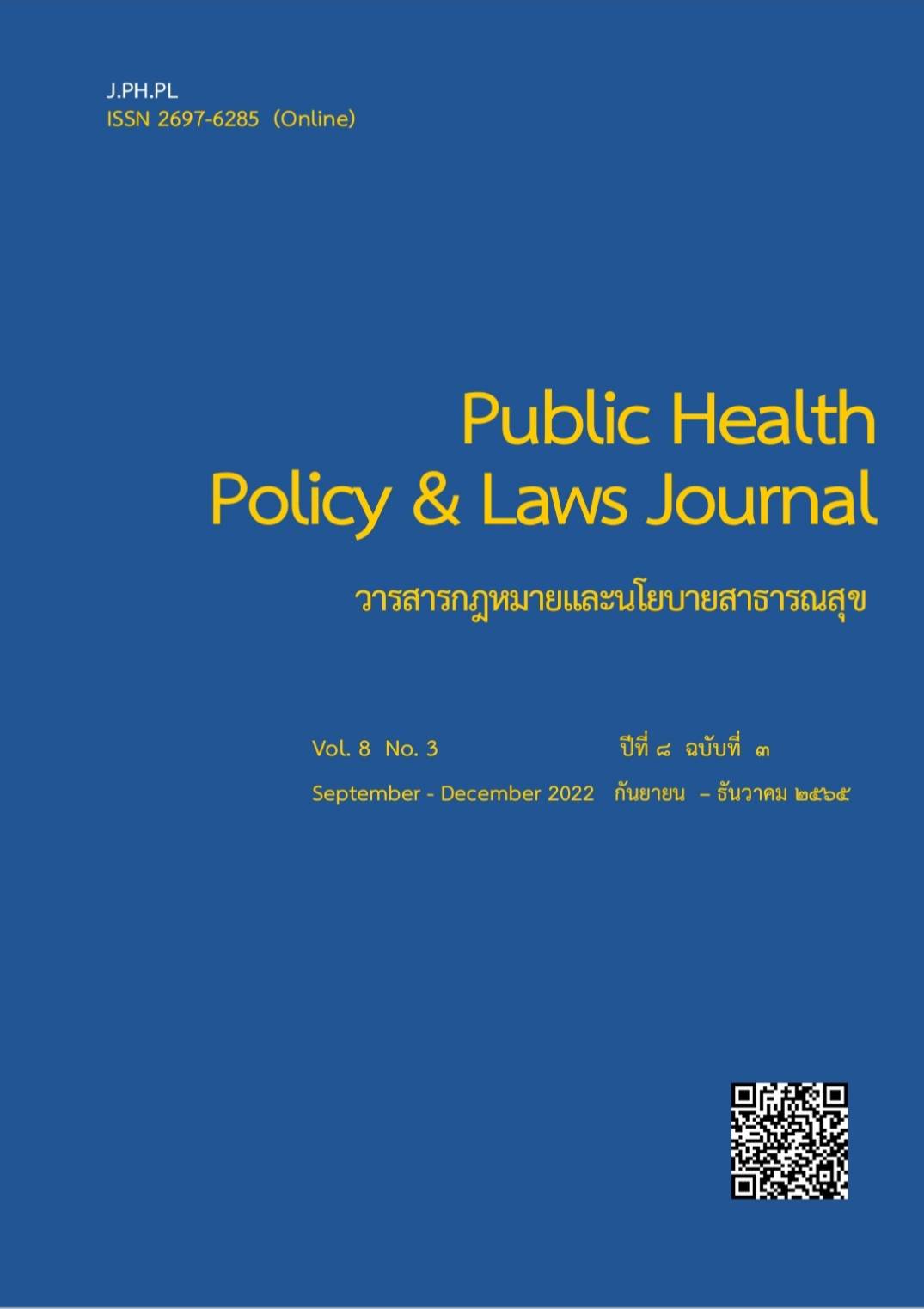Musculoskeletal Disorders among employees in automotive industry in Samut Prakan Province
Keywords:
Ergonomic, Musculoskeletal disorders, Automotive industry workersAbstract
Musculoskeletal disorders are occupational diseases that are most common in automotive industry workers. The cause of Musculoskeletal disorders is mainly due to ergonomic factors. The objective of this study was to determine the prevalence and associated factors with musculoskeletal disorders among employees in the automotive industry. The sample in this study was 75workers, including production workers and office workers undergoing physical therapy treatment clinic area inside the factory. The questionnaire was divided into 3 parts, Personal information, Working characteristics and Musculoskeletal disorders. Data analysis was performed using descriptive statistics and inferential statistics, Chi-square.
The results showed that most production workers are jobs with awkward posture and lifting more than 10 kilograms. Most of the symptoms of musculoskeletal disorders are lower back areas (65.4%). Most office workers use the computer, and most of the symptoms of the musculoskeletal disorders are neck area (51.4%), and the pain scale was moderate. Furthermore, the correlation test showed that the pain scale was related to exercise, and the pain scale was related to body mass index.
In conclusion, this study revealed ergonomics risk factors and personal factors. It is a contributing factor to causing musculoskeletal disorders in employees. Therefore, organizations should use the information obtained to develop, plan, treat, and prevent employees' diseases. Organize activities that promote education about exercise and eating to lead to safer work and better working posture to increase employees' good health and safety status.
References
กรมควบคุมโรค กระทรวงสาธารณสุข. (2561). รู้ตัวเลข รู้ความเสี่ยงสุขภาพ. [อินเทอร์เน็ต] [เข้าถึงเมื่อ 21 มกราคม 2564]. เข้าถึงได้จาก: https://ddc.moph.go.th/uploads/publish/1064820201022081932.pdf
มารยาท โยทองยศ, ผศ.ปราณีสวัสดิสรรพ์. (2563). การกําหนดขนาดของกลุ่มตัวอย่างเพื่อการวิจัย [อินเทอร์เน็ต] [เข้าถึงเมื่อ 15 พฤษภาคม 2564]. http://fsh.mi.th/km/wp content/uploads/2014/04/resch.pdf
สถาบันยานยนต์. (2564). ผลกระทบจากสถานการณ์การแพร่ระบาดของไวรัส “โควิด-19” ต่อ อุตสาหกรรมยานยนต์ อินเทอร์เน็ต] [เข้าถึงเมื่อ 23 เมษายน 2564]. https://www.thaiauto.or.th/2012/th/news/iframe_iu-detail.asp?news_id=4888&news_lang=th&msclkid=137634e0cee011ec896df4a5c10675132.
สำนักงานประกันสังคม กองทุนเงินทดแทน. (2563). สถิติการประสบอันตรายหรือเจ็บป่วยเนื่องจากการทํางาน [อินเทอร์เน็ต] [เข้าถึงเมื่อ 15 พฤษภาคม 2564].https://www.sso.go.th/wpr/assets/upload/files_storage/sso_th/b3f6c678a16da566be1db10d7e84af46.pdf
สำนักงานประกันสังคม กองทุนเงินทดแทน. (2561). สถิติการประสบอันตรายหรือเจ็บป่วยเนื่องจากการทํางาน จําแนกตามความรุนแรงและรหัส ประเภทกิจการ ปี 2561 [อินเทอร์เน็ต] [เข้าถึงเมื่อ 21 กรกฎาคม 2564].
http://www.sso.go.th/wpr/assets/upload/files_storage/sso_th/f1e0ec65f87a8fbb108f8bb8a0ad4ee9.pdf
สำนักงานประกันสังคม กองทุนเงินทดแทน. (2561). สถานการณ์การประสบอันตรายหรือเจ็บป่วยเนื่องจากการทำงาน ปี 2559 – 2563 [อินเทอร์เน็ต] [เข้าถึงเมื่อ 21 กรกฎาคม 2564]. เข้าถึงได้จาก: https://www.sso.go.th/wpr/assets/upload/files_storage/sso_th/5ebe42693bf27ca624d2a14a89f99223.pdf
สำนักงานประกันสังคม กองทุนเงินทดแทน. (2561). สถานการณ์การประสบอันตรายหรือเจ็บป่วยเนื่องจากกาทำงาน ปี 2560 - 2561ประเภทกิจการการผลิตชิ้นส่วนและอุปกรณ์เสริมอื่นๆสำหรับยานยนต์ [อินเทอร์เน็ต] [เข้าถึงเมื่อ 3 มิถุนายน 2564]. https://www.sso.go.th/wpr/assets/upload/files_storage/sso_th/97951ae696533cb7ac9750b901858918.pdf
Bruno AR, et al. (2010). Risk factors for work-related musculoskeletal disorders: a systematic review of recent longitudinal studies. Am J Med. 53(3): 285-323. https://www.researchgate.net/
Dodda Kiran Kumar, et al. (2014). Exercise prescriptions to prevent musculoskeletal disorders in dentists. Journal of Clinical and Diagnostic Research. 8(7):13-6. https://www.ncbi.nlm.nih.gov/
Hamizatun Binti Mohd Fazi, et al. (2019). Risks assessment at automotive manufacturing company and ergonomic working condition. IOP Publishing. 469:1-10. https://www.researchgate.net/
Kara E. Hannibal, Mark D. Bishop. (2014). Chronic stress, cortisol dysfunction, and pain: A psychoneuroendocrine rationale for stress management in pain rehabilitation. American Physical Therapy Association. 94(12):1816-25. https://www.researchgate.net/
Karthik Mani. (2017). Ergonomics education for office computer workers: An evidence-based strategy [Internet] [cited 2022 Mar 20]. Available from: https://www.intechopen.com/chapters/57980
Kuorinka I, et al. (1987). Standardised Nordic Questionnaires for The Analysis of Musculoskeletal Smptoms. Applied ergonomics. 18(3):233-7. https://pubmed.ncbi.nlm.nih.gov/
Laura Viester, et al. (2013). The relation between body mass index and musculoskeletal symptoms in the working population. BioMed Central. 14(238):1-9. https://pubmed.ncbi.nlm.nih.gov/
Nurhayati Mohd Nur, et al. (2014). The prevalence of work-related musculoskeletal disorders among workers performing industrial repetitive tasks in the automotive manufacturing companies. International Conference on Industrial Engineering and Operations Management Bali. 1:1-6. https://www.semanticscholar.org/
Sue A. Ferguson, et al. (2005). Differences among outcome measures in occupational low back pain. Journal of Occupational Rehabilitation. 15(3):5940-4. https://www.researchgate.net/
Wilhelmina E. Hoogendoorn, et al. (2000). Flexion and rotation of the trunk and lifting at work are risk factors for low back pain. Lippincott Williams & Wilkins, Inc. 25(23):3087–92. https://www.researchgate.net/
Downloads
Published
How to Cite
Issue
Section
License
Disclaimer and Copyright Notice
The content and information presented in articles published in the Journal of Law and Public Health Policy represent the opinions and sole responsibility of the respective authors. The editorial board does not necessarily agree with or assume any responsibility for the views expressed.
All articles, data, content, images, and other materials published in the Journal of Law and Public Health Policy are the intellectual property of the journal. Any individual or organization wishing to reproduce, distribute, or otherwise use the entirety or any part of such materials must provide proper citation.





